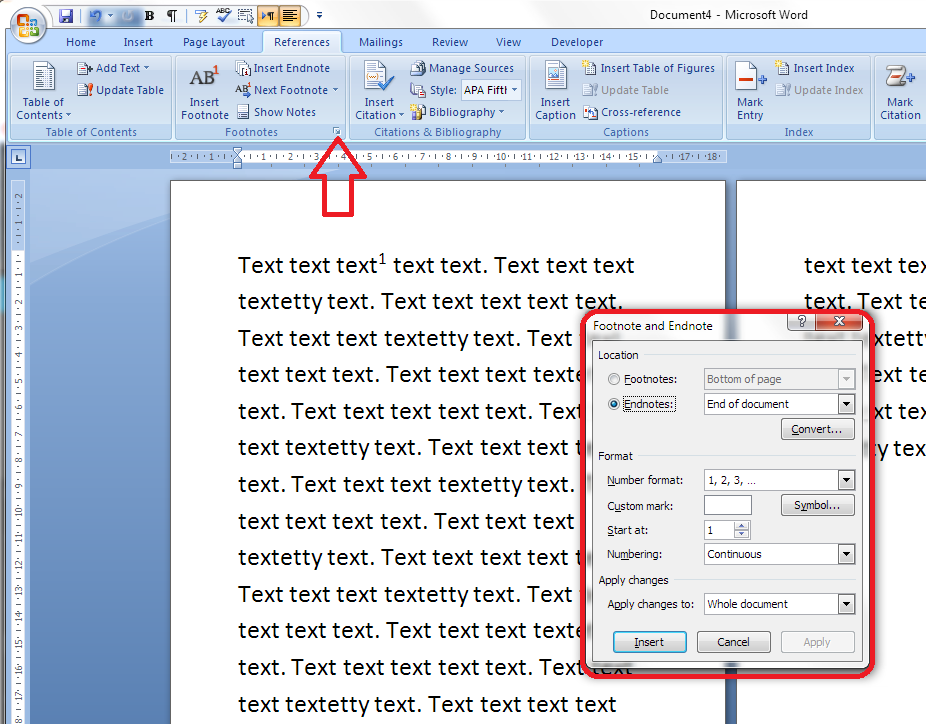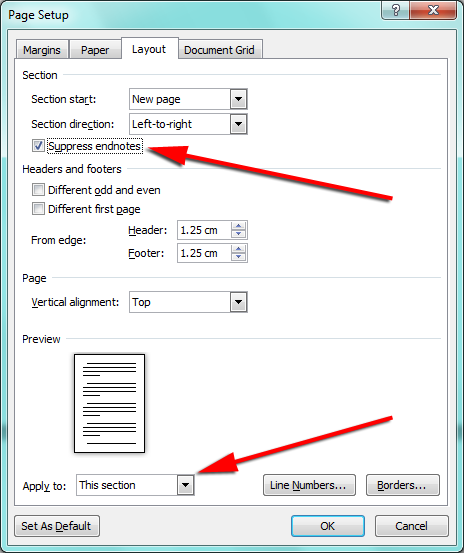

To delete a footnote or an endnote, you must delete the note reference mark in the document window, not the text of the note. Hold down OPTION, and then drag the mark to the new location.

To move or copy a note, you work with the note reference mark in the document window, not with the text of the note. Word updates cross-references automatically when you print.
MICROSOFT WORD ENDNOTE NUMBERING UPDATE
Hold down CONTROL, click the cross-reference number, and then click Update Field on the shortcut menu. If you add, delete, or move a cross-referenced footnote or endnote, you must update the cross-reference number. Select the note reference mark, footnote, or endnote, and then on the Home tab, under Font, apply the formatting changes that you want. style but would like the word Chapter to display automatically in front of the Heading 1 number, you want to change Arabic numbers to Ordinal, or you want to change the spacing after the numbers, you can. You can change the size or font of the note reference mark, footnote, or endnote exactly as you would any other text. If you want to change anything about the numbers for example, you are using the 1.1, 1.2, etc. Word inserts the note number and puts the cursor next to the note number in the footnote or endnote. Under Format, select the numbering options that you want, and then click Insert. Under Location, click Footnotes or Endnotes, and then on the Footnotes or Endnotes pop-up menu, click the location that you want. In your document, click where you want to insert the note reference mark. However, you cannot use the information in the Citations tool or Source Manager to create footnotes or endnotes, and you cannot use footnotes or endnotes to create a list of works cited or a bibliography. The source information stored in the Citations tool or Source Manager can be used to create citations, a list of works cited, or a bibliography. Footnotes and endnotes differ from citations, which are parenthetical references that are placed inline with the text. A footnote or an endnote consists of two parts - the note reference mark and the corresponding note text. Footnotes are positioned at the bottom of the page, whereas endnotes are positioned together on a page at the end of the document. This won't affect any existing documents, only new ones.Footnotes and endnotes are used to explain, comment on, or provide references for text in a document. The next time you create a document based on that template, the endnote reference numbers will be formatted as Roman numerals (assuming you selected a Roman numeral format in step 3). The the intext and reference list entry will automatically format in your Word document.

Type your author surname in the search box and click 'Find', then 'Insert' at bottom of box. From the Word Endnote tab, click 'Find citations'. (This is important so that Word actually has to "use" the settings you made.) In Word, position the cursor in your document where you want to insert the reference number. Insert a dummy endnote and then delete it.Click OK to close the Footnote and Endnote dialog box.Using the Number Format drop-down list, select the numbering format you want to use.In Word 2002 or Word 2003, select Reference from the Insert menu and then choose Footnote.) (In Word 97 or Word 2000, select Footnote from the Insert menu. Display the Footnote and Endnote dialog box.Load the template directly into Word, and then follow these steps: In most cases, this means changing the Normal.dot template. It is possible to change the default, but the way you do it is to change the template on which new documents are based. While this can be done manually in the Insert Endnote dialog box, that takes several steps and a change to the default would be much easier and faster. Ken wonders if it is possible to change the default numbering format for endnotes from i, ii etc.


 0 kommentar(er)
0 kommentar(er)
